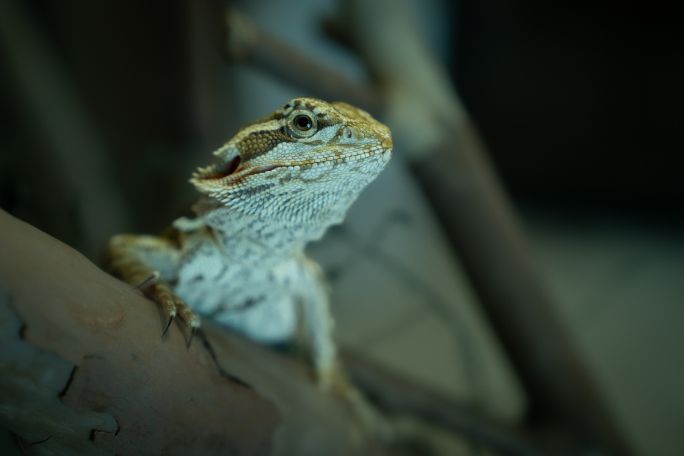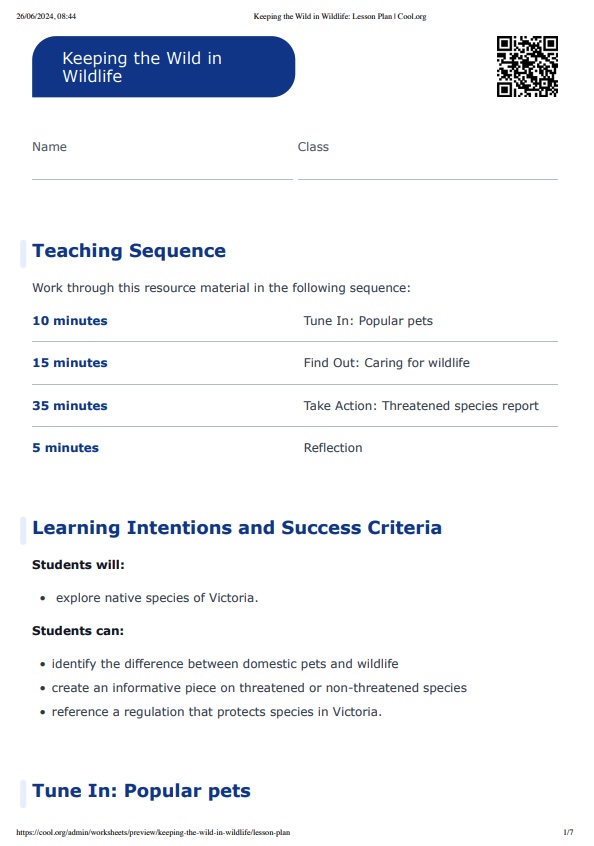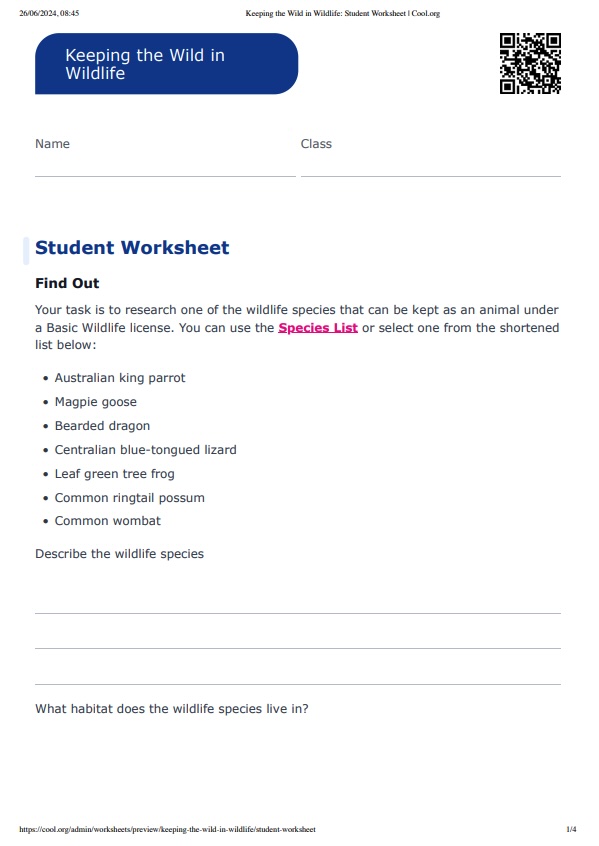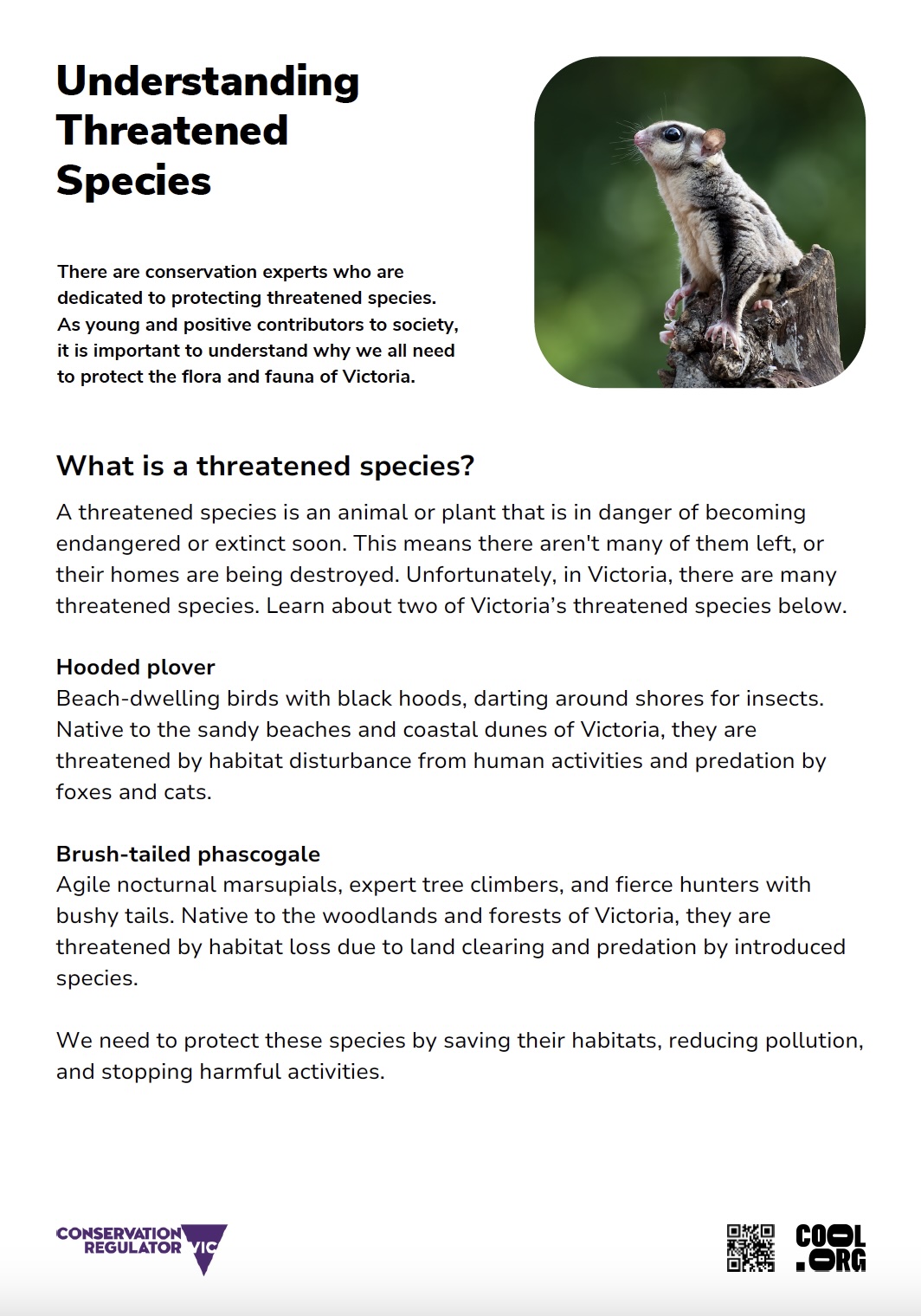Lesson summary
Students will explore the differences between pets, domestic animals and wildlife. Students develop an awareness of threatened species in Victoria and communicate their understanding through a species report in a format of their choice.
Learning intentions:
Students will...
- explore native species of Victoria.
Success criteria:
Students can...
- identify the difference between domestic pets and wildlife
- create an informative piece on threatened or non-threatened species
- reference a regulation that protects species in Victoria.
Lesson guides and printables
Curriculum links
Select your curriculum from the options below.
Lesson details
Skills
This lesson is designed to build students’ competencies in the following skills:
- creative thinking
- communication
- curiosity
- digital literacy
- empathy
- ethical understanding
Curriculum Mapping
Australian Curriculum (v9.0) content description:
Year 5 and 6, Science
- examine how particular structural features and behaviours of living things enable their survival in specific habitats (AC9S5U01)
- investigate the physical conditions of a habitat and analyse how the growth and survival of living things are affected by changing physical conditions (AC9S6U01).
Year 5 and 6, English
- plan, create, edit and publish written and multimodal texts whose purposes may be imaginative, informative and persuasive, developing ideas using visual features, text structure appropriate to the topic and purpose, text connectives, expanded noun groups, specialist and technical vocabulary, and punctuation including dialogue punctuation (AC9E5LY06)
- plan, create, edit and publish written and multimodal texts whose purposes may be imaginative, informative and persuasive, using paragraphs, a variety of complex sentences, expanded verb groups, tense, topic-specific and vivid vocabulary, punctuation, spelling and visual features (AC9E6LY06).
Relevant parts of Year 5 and 6 Science achievement standards: Students explain how the form and behaviour of living things enables survival. Students explain how changes in physical conditions affect living things.
Relevant parts of Year 5 and 6 English achievement standards: Students create written and/or multimodal texts, including literary texts, for particular purposes and audiences, developing, explaining and elaborating on relevant ideas from topics or texts.
NSW Syllabus outcomes:
- examines how the environment affects the growth, survival and adaptation of living things (ST3-4LW-S)
- plans, creates and revises written texts for multiple purposes and audiences through a selection of text features, sentence-level grammar, punctuation and word-level language (EN3-CWT-01).
General capabilities: Critical and Creative Thinking, Digital Literacy, Ethical Understanding, Literacy
Cross-curriculum priority: Sustainability
Level of teacher scaffolding: Medium - lead and facilitate class discussions.
UN Sustainable Development Goals
UN SDG 15: Protect, restore and promote sustainable use of terrestrial ecosystems, sustainably manage forests, combat desertification, and halt and reverse land degradation and halt biodiversity loss
- Target 15.5: Take urgent and significant action to reduce the degradation of natural habitats, halt the loss of biodiversity and, by 2020, protect and prevent the extinction of threatened species.
Resources Required
- Student worksheet (one per student)
- Device capable of displaying audiovisual material.
Additional Info
This lesson has been developed in partnership with the Conservation Regulator, a government agency responsible for regulation of fire prevention, use of public land, wildlife and biodiversity. Through a combination of enforcement and education activities, the Conservation Regulator aims to maintain the health and heritage of these landscapes for future generations to enjoy.
Related Professional Learning
Using The Cool.org Act Framework in the Classroom - Primary
Quick Summary: This course will help you to empower students to take action on issues that are important to them, by offering a variety of strategies and tactics to facilitate meaningful action.




Welcome back!
Don't have an account yet?
Log in with:
Create your free Cool.org account.
Many of our resources are free, with an option to upgrade to Cool+ for premium content.
Already have an account?
Sign up with:
By signing up you accept Cool.org's Terms and Conditions(Opens in new tab) and Privacy Policy(Opens in new tab).